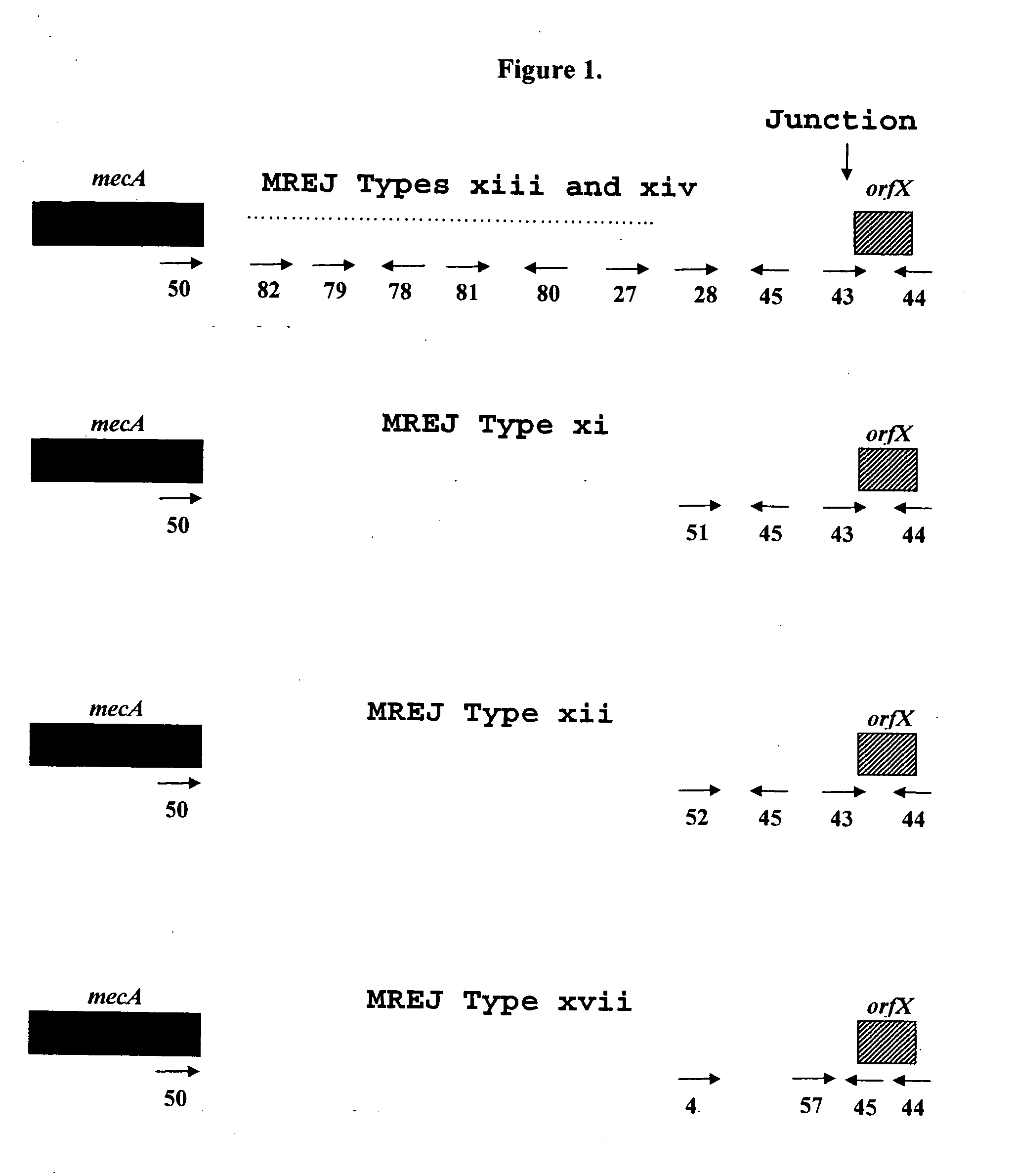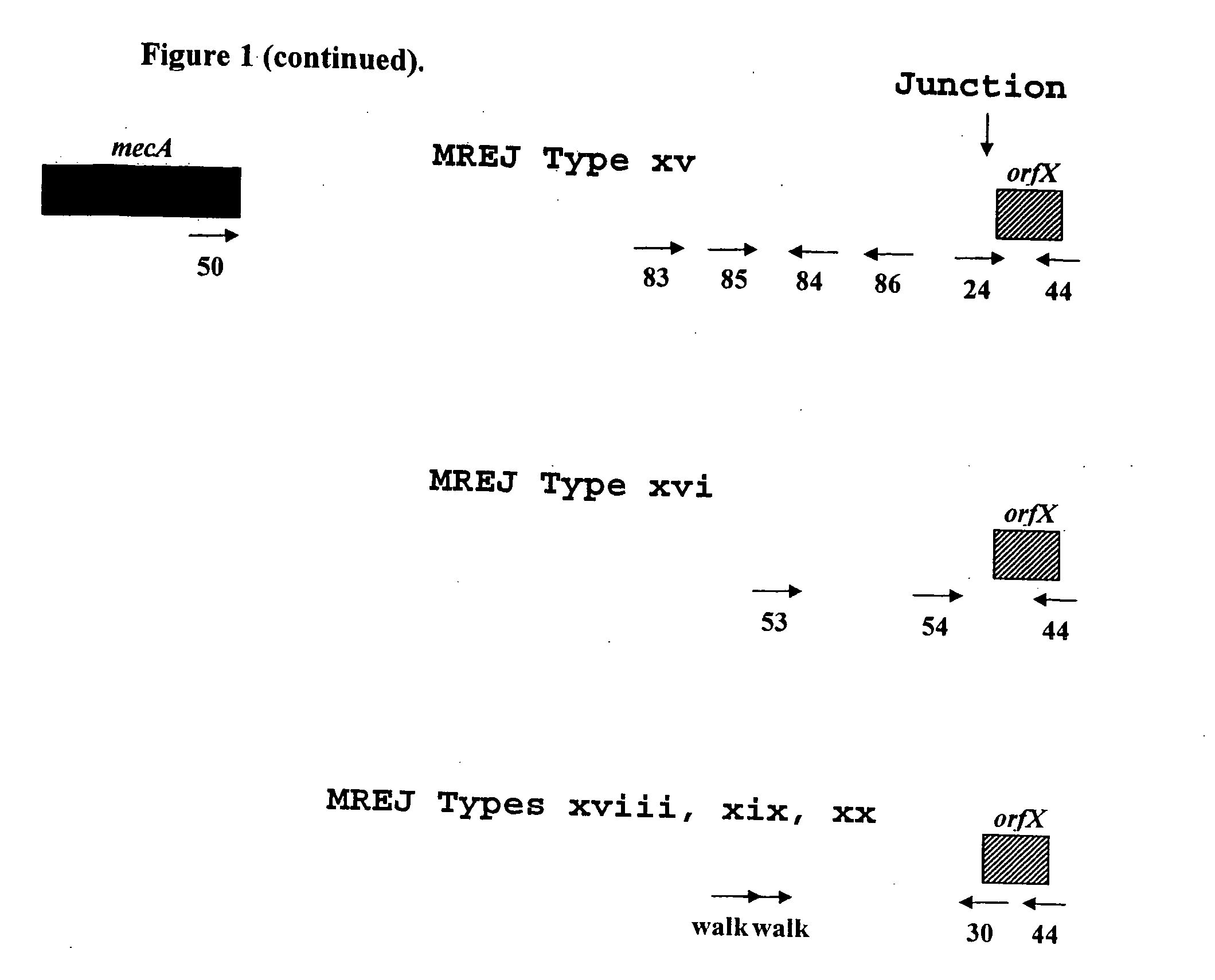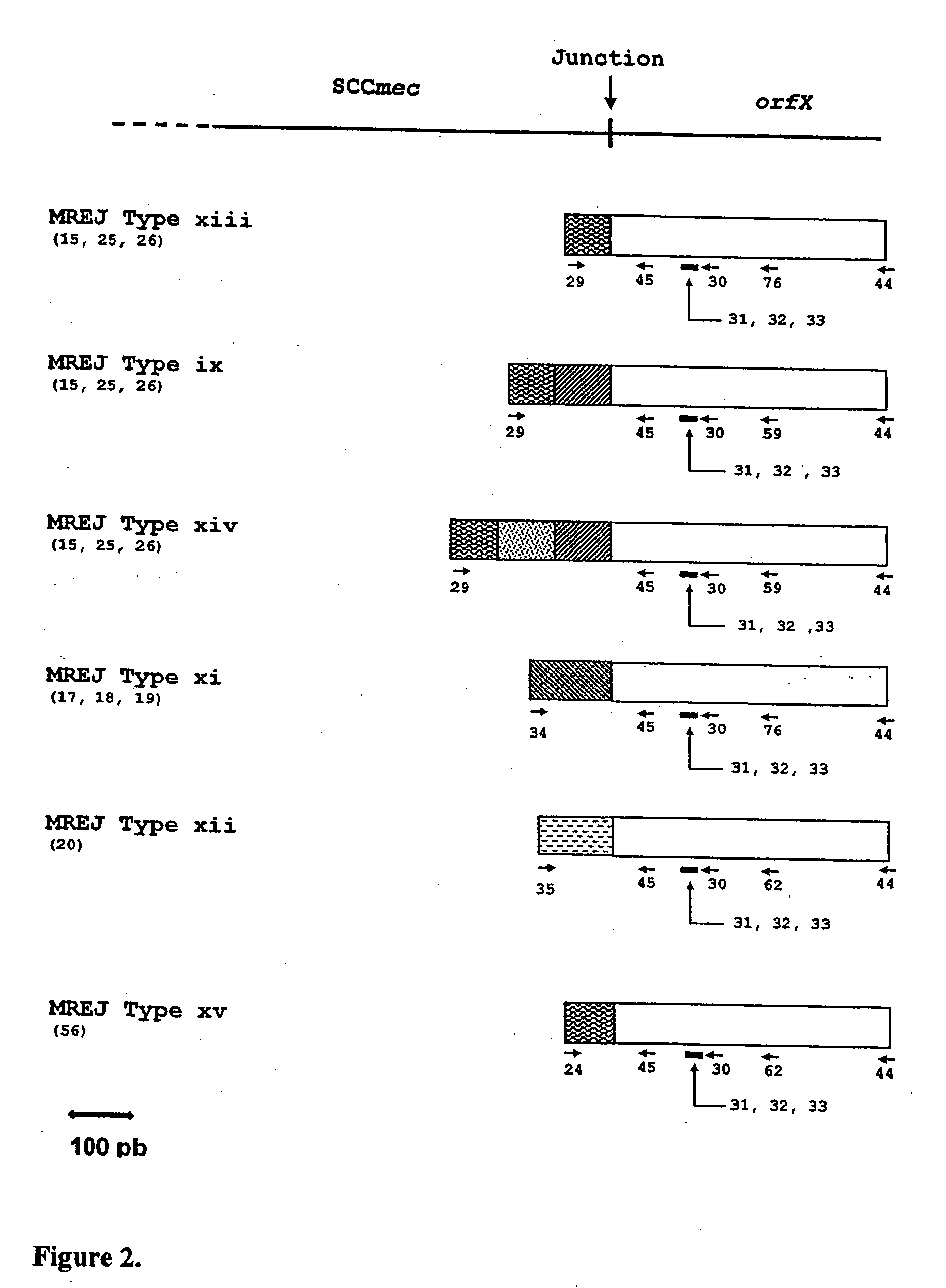Sequences for detection and identification of methicillin-resistant Staphylococcus aureus (MRSA) of MREJ types xi to xx
a staphylococcus aureus and sequence technology, applied in the field of new sccmec right extremity junction sequences for the detection of methicillin-resistant staphylococcus aureus, can solve the problems of not always able to distinguish mrsa from methicillin-resistant cns, mrsa infections can only be treated with more toxic and costly antibiotics, and the major cause of morbidity and mortality
- Summary
- Abstract
- Description
- Claims
- Application Information
AI Technical Summary
Benefits of technology
Problems solved by technology
Method used
Image
Examples
example 1
Evaluation of Previously Described MRSA Diagnostic Amplification Assays
[0067]Initially, the literature taught that five types of SCCmec right extremity sequences (SCCmec types I-V) are found among MRSA strains, based on DNA sequence homology (See, Ito et al., 1999, Antimicrob. Agents Chemother. 43:1449-1458; Katayama et al., 2000, Antimicrob. Agents Chemother. 44:1549-1555; Ito et al., 2001, Antimicrob. Agents Chemother. 45:1323-1336; Ma et al., 2002, Antimicrob. Agents Chemother. 46:1147-1152; Ito et al, 2004, Antimicrob. Agents Chemother. 48:2637-2651). SCCmec DNAs are integrated at a specific site of the chromosome of a methicillin-sensitive Staphylococcus aureus (MSSA), named orfX. Generally, each SCCmec type has a unique nucleotide sequence at the right extremity of the SCCmec cassette. The exception to this rule is seen with SCCmec types II and IV, which exhibit nearly identical sequence over 2000 nucleotides. However, SCCmec type II has an insertion of 102 nucleotides to the ...
example 2
Sequencing of Novel MREJ Types from MRSA
[0073]To further characterize the MREJ region of the 17 MRSA strains from which DNA was not amplified with primers that allow the detection of MREJ types i to x, the nucleotide sequence of MREJ for 15 of these 17 MRSA strains was determined. First, a primer that anneals to mecA (SEQ ID NO.: 50) and a primer that anneals to the 5′ end of orfX (SEQ ID NO.:44) were used together in a PCR reaction to amplify MREJ fragments of MRSA. The strategy used to select these primers is illustrated in FIG. 1. Four identical PCR reactions, each containing 100 ng of purified genomic DNA were performed. Each PCR reaction contained 1× HERCULASE™ DNA polymerase buffer (Stratagene, La Jolla, Calif.), 0.8 μM of each of the oligos of SEQ ID NOs.: 44 and 50, 0.56 mM of each of the four dNTPs and 5 units of HERCULASE™ DNA polymerase (Stratagene, La Jolla, Calif.) with 1 mM MgCl2 in a final volume of 50 μl. PCR reactions were subjected to cycling using a standard therm...
example 3
Sequence Analysis of Novel MREJ Types xi-xx
[0084]The sequences obtained for 15 of the 17 strains non-amplifiable by the MRSA-specific primers detecting MREJ types i to x previously described were compared to the sequences available from public databases. In all cases except MRSA strain CCRI-12845, the orfX portion of the MREJ sequence had an identity close to 100% to publicly available sequences for orfX. CCRI-12845 has a deletion in orfX (SEQ ID NO.: 21) (described below). While the orfX portion of most MREJ fragments (SEQ ID NOs.: 15-20, 25-26, 39-42, 55-56) shared nearly 100% identity with publicly available S. aureus orfX sequences, with the exception of strain CCRI-12845, the DNA sequence within the right extremity of SCCmec itself was shown to be different from those of MREJ types i, ii, iii, iv, v, vi, vii, viii, ix, and x (International Patent Application PCT / CA02 / 00824; U.S. Pat. No. 6,156,507). The DNA sequence within the right extremity of SCCmec of CCRI-12845 was similar...
PUM
| Property | Measurement | Unit |
|---|---|---|
| Fraction | aaaaa | aaaaa |
| Angle | aaaaa | aaaaa |
| Angle | aaaaa | aaaaa |
Abstract
Description
Claims
Application Information
 Login to View More
Login to View More - R&D
- Intellectual Property
- Life Sciences
- Materials
- Tech Scout
- Unparalleled Data Quality
- Higher Quality Content
- 60% Fewer Hallucinations
Browse by: Latest US Patents, China's latest patents, Technical Efficacy Thesaurus, Application Domain, Technology Topic, Popular Technical Reports.
© 2025 PatSnap. All rights reserved.Legal|Privacy policy|Modern Slavery Act Transparency Statement|Sitemap|About US| Contact US: help@patsnap.com



